Ki Monastery, also known as Kee, Kye or Key Monastery is a Tibetan Buddhist monastery located in the Spiti Valley of Himachal Pradesh.The spectacular monastery is located at an height of 4116m and 7 km from Kaza. It is the largest monastery in Spiti Valley.The gompa is an irregular heap of low rooms and narrow corridors on a monolithic conical hill. Established in the 11th century has ancient Buddhist scrolls and paintings. It also houses large number of Buddhist monks and nuns and a cafeteria.It is the biggest monastery of Spiti Valley and a religious training centre for Lamas.

A Great collection of India mythology, mythology" is a collection of stories associated with a culture or institution or person. and in another form A myth is a religious story that involves a higher power or entity. The gods, goddesses, and other supernatural beings who appear in myths are worshipped or revered.
Showing posts with label Priests. Show all posts
Showing posts with label Priests. Show all posts
Tuesday, 23 December 2014
The KYE MONASTERY
Ki Monastery, also known as Kee, Kye or Key Monastery is a Tibetan Buddhist monastery located in the Spiti Valley of Himachal Pradesh.The spectacular monastery is located at an height of 4116m and 7 km from Kaza. It is the largest monastery in Spiti Valley.The gompa is an irregular heap of low rooms and narrow corridors on a monolithic conical hill. Established in the 11th century has ancient Buddhist scrolls and paintings. It also houses large number of Buddhist monks and nuns and a cafeteria.It is the biggest monastery of Spiti Valley and a religious training centre for Lamas.
Monday, 22 December 2014
The Great Tower Temples of Kullu Valley, Himachal Pradesh, India

The Great Tower Temples of Kullu Valley, Himachal Pradesh, India are dedicated to “Shringa Rishi” who is the chief deity of Banjar valley, Kullu District, Himchal Pradesh. The temple of Shringa Rishi is situated at village Bagi.This tower temple of Chaini is the tallest standing structure of its kind in the entire Western Himalayas.This tower survived the devastating 1905 Kangra earthquake. It is believed that this temple was built around the 17th Century by a local King Dhadhu and that’s why this temple is locally known as Dhadhiya Kothi as well. The tower temple stands on a plinth, which is almost 15 meters deep, and is made of locally available stone and deodar wood.
Wednesday, 17 December 2014
The Champavati Temple
The Champavati Temple, located in the heart of the city of Chamba, is a pilgrim destination for many Hindus. It is named after Champavati, the daughter of King Sahil Varman, the founder of the temple. The temple holds great historical and religious relevance for many Hindus. Champavati Temple enshrines an idol of Goddess Mahisasuramardini, the avatar of Goddess Durga. According to the legend, the daughter of King Sahil Varman Champavati was a religious person and used to visit temples and sadhu’s ashrams regularly.
Labels:
Champavati,
God,
Goddess,
Himachal,
Hindu,
Hinduism,
India,
Priests,
shiva,
Soul,
Spritual,
supernatural,
Suryadev,
Temple,
vedic,
vikasacharya
The Renukaji temple

The Renuka Lake or Temple (672 m) is regarded as the embodiment of Renukaji, the wife of the sage Jamadagini and the mother of Parshurama – one of the ten `Avatars` of Lord Vishnu. Shaped like the profile of a woman, the lake has the circumference of 2.5 km and is the largest in Himachal.
Aghori – The Epic Souls

To be really aware you must be able to know simultaneously what is going on thousands of miles away today, what may have happened centuries ago, what will happen anywhere in the world decades from now, and what is occurring, has occurred, or will occur on other planes of existence. And you must still act as if you know nothing. You must just sit and talk with other people and play the part which Nature has assigned to you.
Labels:
aghori,
Hindu,
Hinduism,
India,
Lord,
Myths,
Priests,
Sadhu,
Soul,
supernatural,
Temple,
theacharyaa,
vikasacharya,
yoga,
yogi
Tuesday, 16 December 2014
Pure Heart & Delight soul

The man who is pure of heart Is bound to fulfill himself In whatever way he is taught. A worldly man seeks all his life, But is still bewildered. Detached from the senses, You are free. Attached, you are bound. When this is understood, You may live as you please.
Astavakra Gita
Labels:
Dharma,
Diety,
geeta,
God,
Goddess,
Hindu,
Hinduism,
Lord,
Mantra,
Mythology,
Myths,
Priests,
theacharyaa,
vikasacharya
Om chanting Aum

Om is the main sound, from which all other sounds are produced, even the sound of mother. There is a lot of significance of chanting Om, which you will get to realize within a few days of chanting. It will have a major impact on your day to day life. When you start reciting Om, you will feel its power. Well, in this article, we will provide you with information on the power of Aum, so read on.When you take a deep breath and chant Om, it causes a very calmful effect, which will totally relax your mind and body. It is the first stage of meditation, which aims at drawing your attention away from all other tensions that have occupied your mind. The sound of Om is very pleasant to hear. When accompanied by slow deep breathing, it gives a very gentle massage to your chest, spine, tummy and head. Om chanting improves the functioning of all organs of the body and thus, helps in curing various diseases. It helps to improve your concentration power, thereby enabling you to grasp more information. Om chanting is like an orientation to the spiritual practices. When your mind is away from all the worldly thoughts, it is the stage when you get truly connected to the almighty God. It infuses vitality in the body and one tends to feel stronger.
Labels:
aum,
God,
Goddess,
Himachal,
Hindu,
Hinduism,
India,
Mahamrityunjaya,
Mantra,
Mythology,
Priests,
shiva,
Spritual,
Temple,
veda,
vedic,
vikasacharya
River Ganga – India’s National River
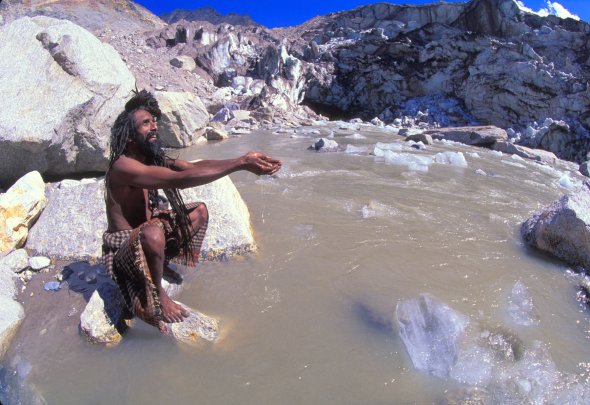
The origin of river Ganges lies at the height of 13,800 feet in the mountain ranges of Himalayas, in Tehri Garhwal, near Gangotri. It begins high in the Himalayas as a pair of head streams. It begins in an ice cave in the mountains about 10,300 feet above sea level. Gangotri is known as the place of origin of the revered Ganges river, known as Ganga in India it is also consider one of the holy place in chota char dham . The holiest of the Indian rivers, is the longest river in India and the greatest waterway in India. The river has been declared as India’s National River. Ganges is the source of sustainment of life in the great Indian plains and it is at Gangotri that the journey of Ganga begins. River Ganges gets water from the melting snow of Nanda devi, Gurla, Mandhata, Dhaulagiri, Gesaisthan, Kanchenjunga and Mount Everest. Many small and big rivers merge with the Ganges in the Himalayan region. The Ganges river flows through Bangladesh, but the greater part of it flows through India. The river flows across the northern corner of India. The Ganges flows across India and Bangladesh until it empties out into the Bay of Bengal. The great river provides water to many places, and many places rely on it.


There are many versions of stories regarding the origin of Ganges. In another story the sage Valmiki of Ramayana, Ganges was the daughter of ‘Himalaya’ and ‘Maina’. The deities abducted her and took her to heaven and from then onwards, ‘Ganga’ started living inside the ‘Karmandala’ . According to Kritivas Ramayana the deities had taken ‘Ganga’ to Lord Shiva to get her married with him. When ‘Maina’ did not find her in the house, she cursed to attain the form of water.
Monday, 15 December 2014
Classical Hinduism

An important idea that developed in classical Hinduism is that dharma refers especially to a person’s responsibility regarding class (varna) and stage of life (ashrama). This is called varnashrama-dharma. In Hindu history the highest class, the Brahmins, adhered to this doctrine. The class system is a model or ideal of social order that first occurs in the oldest Hindu text, the Rig Veda and the present-day caste (jati) system may be rooted in this.
Labels:
aghori,
bhakti,
God,
Goddess,
Hindu,
Hinduism,
Legends,
Mantra,
Priests,
theacharyaa,
veda,
vedic,
vikasacharya
Sunday, 14 December 2014
Om Namah Shivaya

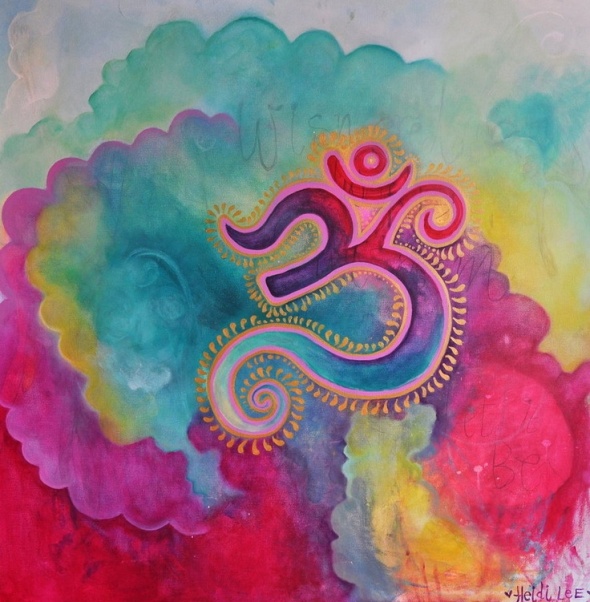
Om or Aum is the pranava or seed mantra of all mantras. The two syllables na- and mah- can be translated as “I humbly bow to you”. The three syllables shi-vaa-ya invoke Lord Shiva and all his energies to bless us and lead us to the highest state of peace and meditation. The mantra should ideally be chanted twice a day (morning and evening) for 108 times each. The two words, namah and shivaya, are also referred to as the panchakshara (five letter) chant. It is said that those who chant these five holy letters while meditating on Lord Shiva will be blessed by visions of Shiva – the Lord of the yogis.
lord of the cremation – Shiva
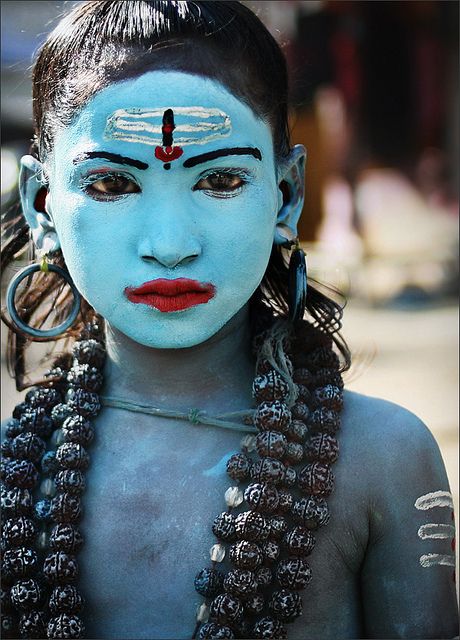
Shiva, the third god of the Hindu triadition, has three eyes, the third one (between the eyebrows) being usually closed, except at the time of destruction of things. He wears long hair, supports the holy Ganga river on his head and the crescent moon on his matted hair. He has two to four arms, holds a trident in his hand, is naked except for a tiger-skin, besmears himself with ash and is decorated with snakes on his head, neck and arms. He is very fair-coloured but has a blue throat due to his having drunk poison during the time of the churning of the ocean by the gods. In his other hands he holds an axe, an antelope, and an hour-glass shaped drum called a ‘damru’. He wears a garland of skulls and is also known as the lord of the cremation grounds. His consort is Parvati and he is the father of Ganesha and Skanda (Kartikeya). His vehicle is the bull called Nandi.
The Mahamrityunjaya – Victory from death
 .
.
Mahamrityunjaya Mantra is one among the finest Mantra’s in Indian Mythology and Spirituality belongs to Lord Shiva.It is a combination of three hindi language words i.e. “Maha” which means Great , “Mrityun” means Death and “Jaya” means Victory which turns into Conquer or victory over death. It is also known as “Rudra Mantra” or “Trayambakam Mantra”. Rudra refers to Lord Shiva.
Om Trayambakam Yajamahe, Sugandhim Pushti Vardhanam,
Urvarukmiv Bandhanat, Mrityurmokshaya Mamratat.
त्रयम्बकं यजामहे सुगन्धिं पुष्टिवर्धनम् ।
उर्वारुकमिव बन्धनान् म्रुत्योर्मुक्षिय मामृतात् ॥
The Shani Dev – one of the nine Navagraha or planets
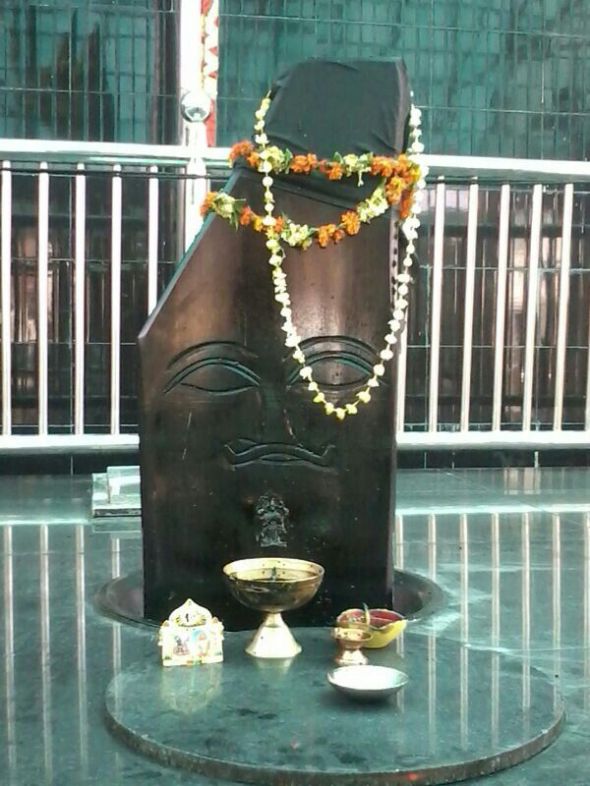
ShaniDev is one of the (Planet)”Navagraha ”which are the nine primary celestial beings in Hindu astrology, or Mtyhs. The word Shani (Saturday) also denotes the Seventh day or Saturday in most Indian languages.Shanaye Kramati – the one who moves slowly, as Saturn takes about 30 years to rotate around the Sun. Shani is also known as Shanaiscarya, Shani Bhagavan, Shaneesvara, Saneesvara, Shaneesvaran, Shani Deva.
Shani is a Lord and son of Surya (the Sun God) and his wife Chhaya (goddess of Shadow) and hence also known as Chayyaputra. He is the cousin of Yama, the Hindu God of death. It is said that when he opened his eyes as a baby for the very first time, the sun went into an eclipse, which clearly denotes the impact of Shani on astrological charts. He is known as the greatest teacher. He is known in Hindu scriptures as the greatest trouble maker as well as the greatest well wisher. He is depicted dark in colour, wearing cloths in black, holding a sword, arrows and two daggers and variously mounted on a black vulture or a raven.
Goddess Parvati

Goddess Parvati is regarded as the power and divine consort of Lord Shiva – the Destroyer. Like her consort Shiva, Goddess Parvati is said to have both mild and terrible aspects.The appearance of Goddess Parvati will vary depending on whether she is depicted alone or with Lord Shiva. When she is depicted along with Lord Shiva she has two hands with a blue lotus in her right hand and the left hand by her side.Kali is the first representation of Goddess Parvati and she was known as the destroyer. She is also known as the Goddess of time.
Krodh Shanti Mantra or Wrath spells peace
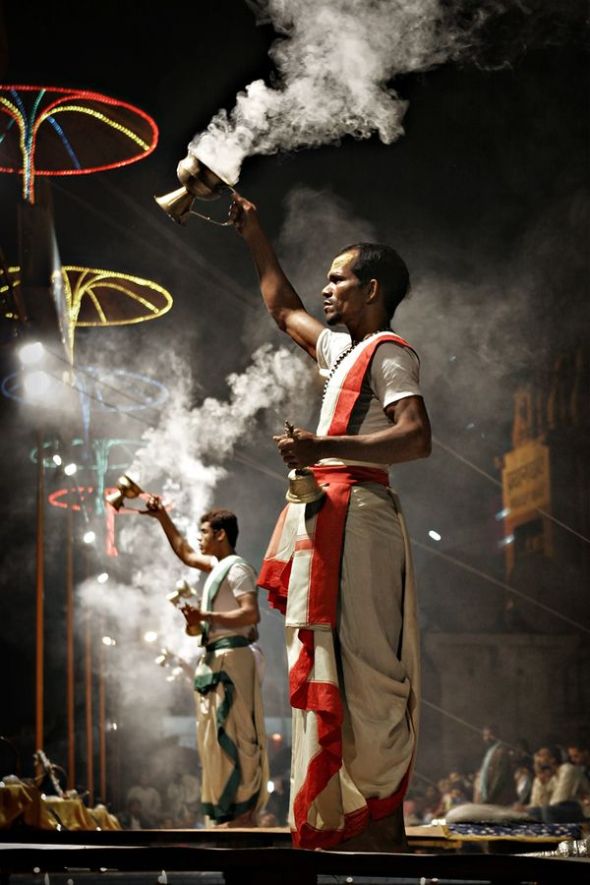
ॐ शान्ते प्रशंते सर्वे क्रोधोपश्मानी स्वाहा ||
Om Namaha Shaante Prashaante Om Hreem Hraam Sarvakrodh Prashamani Swaahaaa.
The mantra is very beneficial to calm anger.
Ringing the Bells -express thanks to the deities
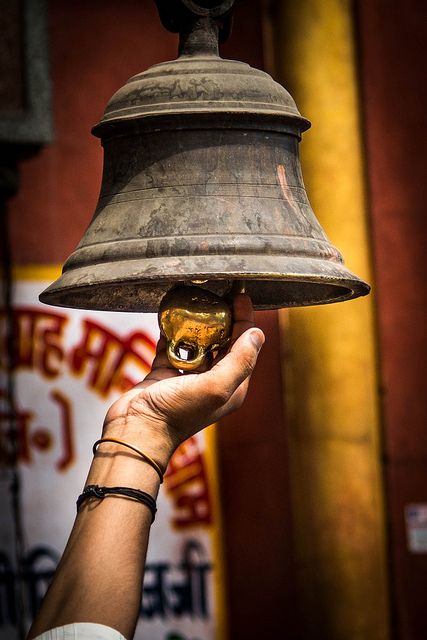
All the Hindu temples have bell at the entrance of the temple or inside the temple and usually you need to ring it before you enter temple and while doing pooja to God.Bells are important symbols in Hindu worship. Each temple, or mandir, generally hangs at least one metal bell at its entrance for devotees to announce their presence to the Hindu deities. Priests or devotees ring more bells within the temple during worship in order to invoke the gods.
Subscribe to:
Posts (Atom)